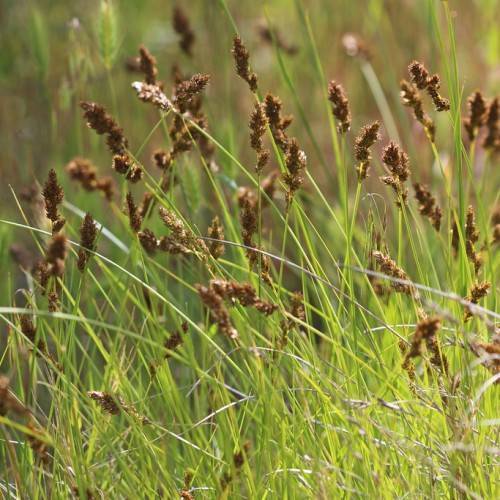
Copycat Sedge
Carex simulata
Also Known As - Analogue Sedge,Short Beaked Fen SedgeWatering:
Minimal
Hardiness Zone:
Flowers:
Flowers
Sun:
Sun
Soil:
Sand
Leaf:
Yes
Growth Rate:
Low
Drought Tolerant:
Yes
Salt Tolerant:
Yes
Care Level:
Medium
watering
Sea Beach Sedge is a low growing evergreen plant that requires little watering. It prefers soils that are kept slightly moist, and does not tolerate wet soils. When establishing newly planted Sea Beach Sedge, water the plants once a week with a deep soaking. Once the plants are firmly established, water them every 2 to 3 weeks. Water the Sea Beach Sedge in the morning, avoiding wetting the foliage, as it may cause leaf problems. During summer months, hot and dry conditions may require more frequent watering, about every 10-14 days, depending on the soil condition and weather in your area. Furthermore, during extended hot and dry periods, winter, or if the plants become wilted, water them more frequently.
sunlight
Sea Beach Sedge (Carex silicea) requires between 5-8 hours of full sun per day. It should be planted in a location that receives full sun in the morning and partial shade in the afternoon. Avoid planting in a location where it would receive direct afternoon sun since the intense heat and dryness could damage the plant. As a coastal species, it also prefers a briny atmosphere and will do best when planted near the ocean or at least within 100 feet of the beach.
pruning
Sea Beach Sedge should be pruned once a year in late spring or early summer, after the wet season and prior to summer flowering. Pruning should be light and careful to ensure that the plant does not become overly crowded and that the foliage does not become damaged. The terminal flower-seed heads can be cut back to the nearest leaf node, resulting in a much bushier looking plant. This will keep the foliage looking healthy and encourage more growth. Any dead or damaged foliage should be removed at this time as well.
